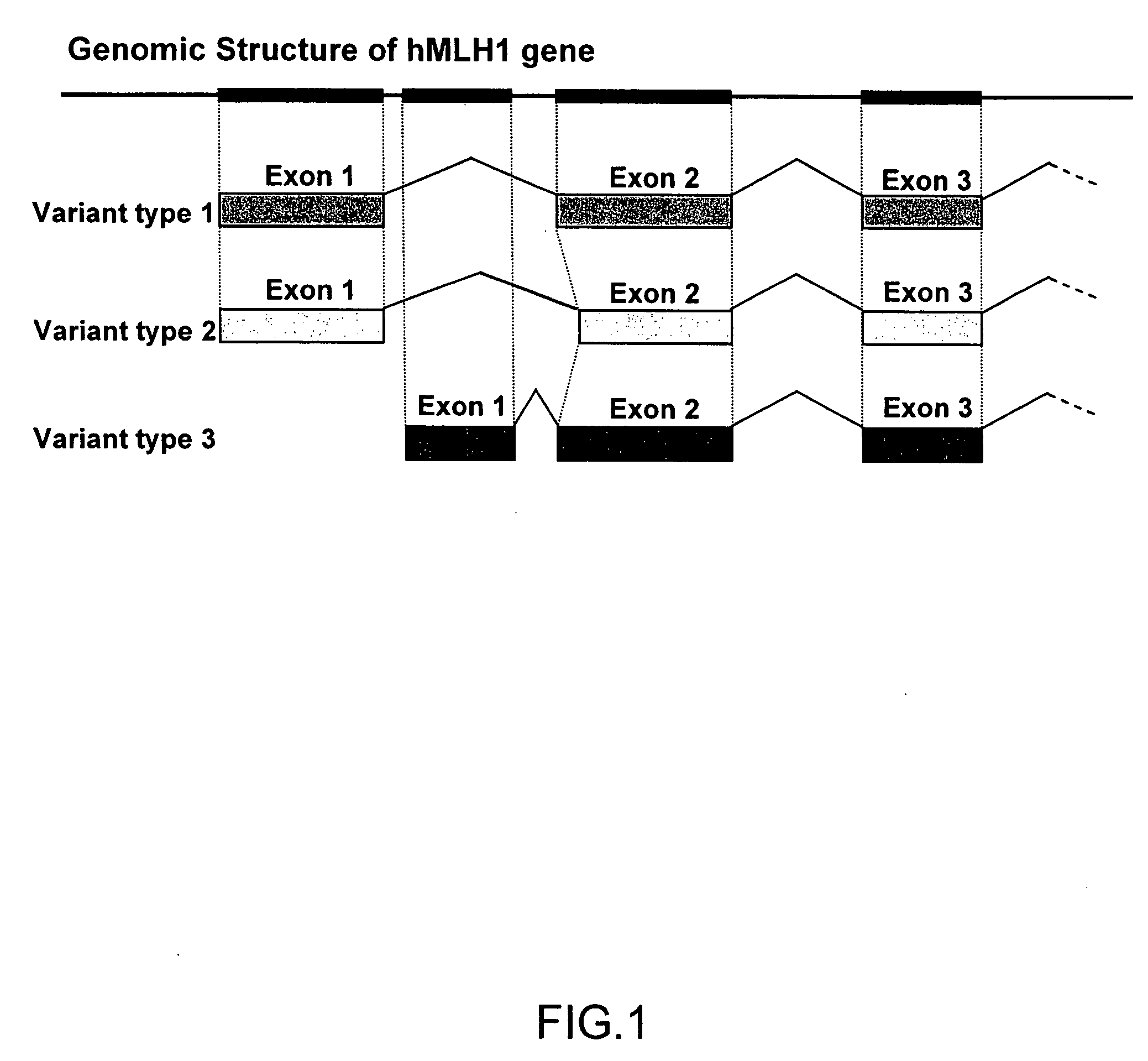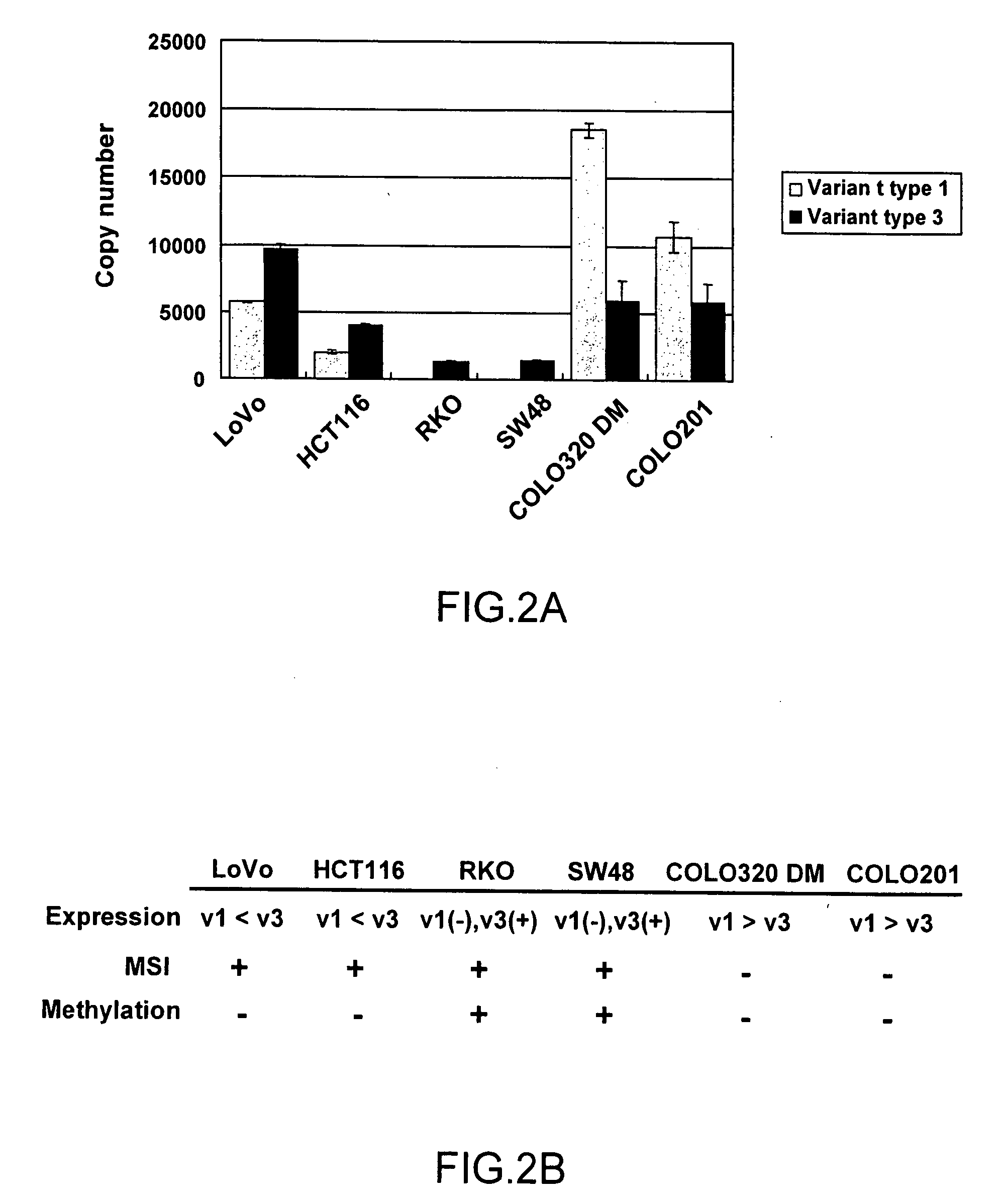Method and kit for detection of microsatellite instability-positive cell
a microsatellite instability and cell technology, applied in the field of gene expression analysis for detecting a cell with microsatellite instability, can solve the problems of insufficient explanation of the complicated brain system, inducing malignant transformation of cells, and low disease cover ratio of this method
- Summary
- Abstract
- Description
- Claims
- Application Information
AI Technical Summary
Benefits of technology
Problems solved by technology
Method used
Image
Examples
example 1
Searching for Transcriptional Variants of hMLH1 Gene
[0080]In order to examine a possibility that the hMLH1 gene would be expressed as several transcriptional variants (mutants) as a result of alternative splicing or the usage of an alternative promoter, the present inventors conducted the following experiment.
[0081]As described in Non-Patent Document 2, sequence information of approximately 1,800,000 of human full-length cDNAs including the 5′-terminus has been revealed based on the obtainment of human gene full-length cDNAs by construction of a cDNA clones using the oligo-cap method (Suzuki and Sugano (2003) Methods Mol. Biol. 221: p. 73-91). Such sequence information has been assigned to GenBank, and it is disclosed to the public. The present inventors collected such sequence information from GenBank, and they formatted it into multi-FASTA. Thereafter, homologous searching was performed against the thus obtained sequence data with a blastn program, using the RefSeq sequence (NCBI ...
example 2
[0085]As a result of the analysis of Example 1, it was found that 3 types of variants as the transcripts of the hMLH1 gene are present. The hMLH1 gene had previously been known as a gene associated with malignant transformation of cells. This time, the presence of transcriptional variants has been clarified for the first time, and thus, association of such variants with cancer has been anticipated.
[0086]Thus, focusing attention on variant types 1 and 3, the expression levels of such variants were measured by real-time PCR, and the expression level in cancer cell lines was compared.
[0087]As test materials, cultured cell lines LoVo, COLO320DM, COLO201, SW48, RKO, and HCT116 (all of which were cells derived from human colorectal cancer) were purchased from ATCC (American Type Culture Collection) and the Health Science Research Resources Bank, the Japan Health Sciences Foundation, and such cultured cell lines were then used. Each type of cells were cultured in an Advanced DMEM medium (I...
PUM
| Property | Measurement | Unit |
|---|---|---|
| Fluorescence | aaaaa | aaaaa |
| Level | aaaaa | aaaaa |
Abstract
Description
Claims
Application Information
 Login to View More
Login to View More - R&D
- Intellectual Property
- Life Sciences
- Materials
- Tech Scout
- Unparalleled Data Quality
- Higher Quality Content
- 60% Fewer Hallucinations
Browse by: Latest US Patents, China's latest patents, Technical Efficacy Thesaurus, Application Domain, Technology Topic, Popular Technical Reports.
© 2025 PatSnap. All rights reserved.Legal|Privacy policy|Modern Slavery Act Transparency Statement|Sitemap|About US| Contact US: help@patsnap.com



